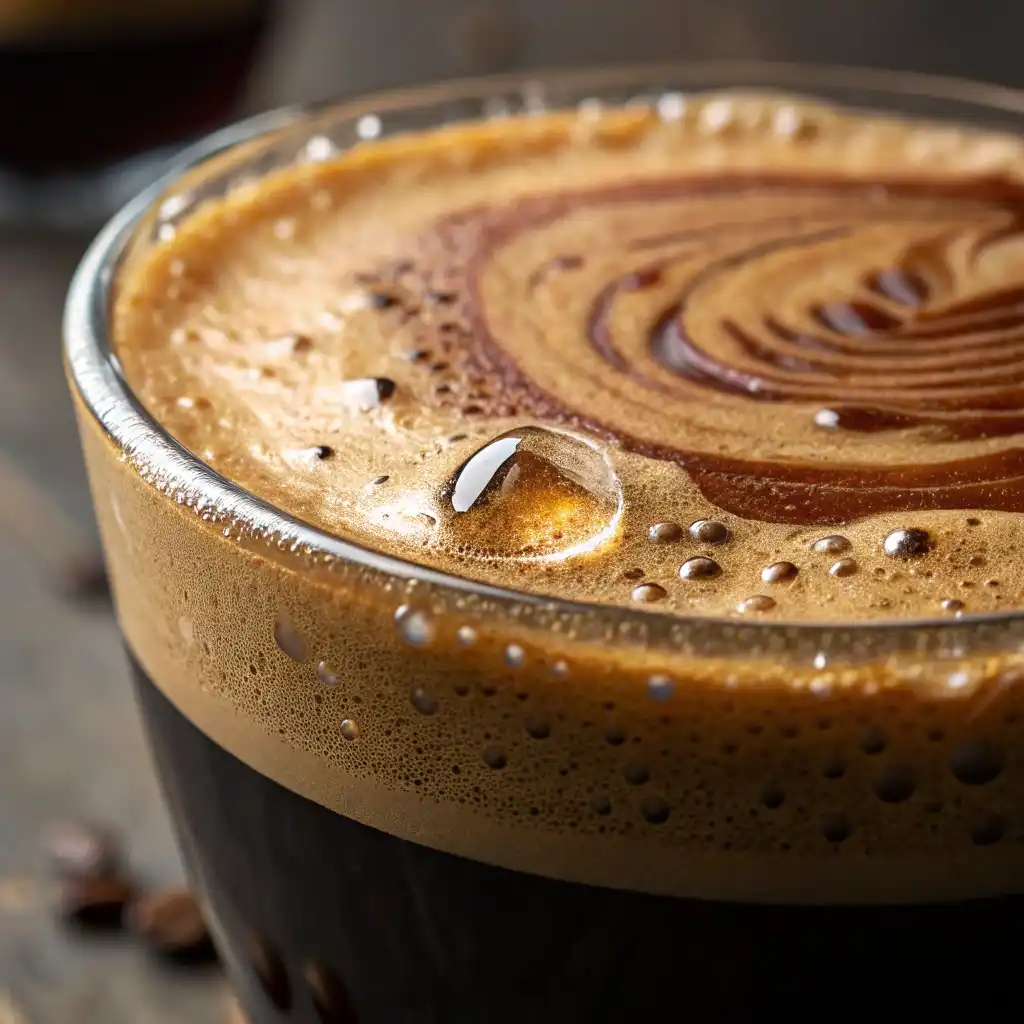Cubano coffee was more than just a drink for Marisol it was her morning ritual, her afternoon recharge, and her evening reward. At 36, this Miami-born woman of Cuban descent had brewed Cubano coffee nearly every day since she was old enough to reach the kitchen counter. Raised on the sweet aroma of Café Cubano and the gentle clink of demitasse cups, she learned early that the secret to perfect Cubano coffee wasn’t just in the grind or the flame it was in the timing, the sweetness, and the tradition passed down from her abuela.
Every morning before work, Marisol would pull out her trusted silver moka pot, scoop in the dark roast coffee grounds, and spoon a bit of sugar into a small mug. She knew just when to collect the first few drops of that concentrated espresso to whip into an espuma the frothy, golden crown that sat proudly atop each cup. For her, making Cubano coffee wasn’t just about the caffeine. It was about connection to her roots, to her routine, and to anyone lucky enough to share in a colada.
As we dive into this guide, you’ll discover how Cubano coffee holds its place not only in Cuban kitchens but also in cafes across Florida and beyond. From learning how to make a classic Cubano shot to preparing a creamy Café con Leche, this article breaks down every element that makes Cubano coffee so loved, so strong, and so unforgettable. Whether you’re new to the Cuban coffee world or looking to perfect your brew, you’ll find everything you need right here.
Check out our Breve Coffee recipe if you’re a fan of rich espresso drinks with creamy textures.
What is Cubano Coffee? A Cultural and Flavorful Introduction
Origins of Cubano Coffee and its Cultural Importance
Cuban coffee has been a treasured part of daily life in Cuban culture for generations. It originated in the early 18th century when coffee cultivation spread across the Caribbean, but in Cuba, it quickly evolved into something deeper ritualistic and social. From the streets of Havana to the heart of Miami’s Little Havana, Cuban coffee represents community, comfort, and connection. It’s more than a caffeine boost; it’s a pause in the day to gather with family or friends, share stories, and enjoy a shot of sweetness. The rich aroma and bold flavor of Cuban coffee reflect not only the island’s agricultural history but also its resilient spirit.
What Makes Cubano Coffee Unique Compared to Regular Espresso?
What truly sets Cuban coffee apart from standard espresso is the way it’s brewed and sweetened. Traditionally made in a moka pot or stovetop espresso maker, Cuban coffee is brewed with dark-roasted, finely ground beans and sweetened with sugar that’s whipped into the first few drops of espresso. This method creates a light, frothy topping called espuma, giving each sip a smooth and sweet finish. While espresso can be bitter and intense, Cuban coffee strikes a perfect balance of robust and sweet, making it beloved by those who prefer a bold but approachable brew.
PrintHow To Make Cuban Coffee (Café Cubano)
Un cafecito caliente con espumita is my favorite afternoon treat! Café Cubano is an espresso drink made with dark roast espresso brewed in a stovetop espresso maker then stirred with a luscious sugar foam. Whether enjoyed during breakfast, as a dessert, with strangers, or as a much-needed 3:05 pm energy boost, Cuban coffee is the heart of Miami Cuban culture.
Ingredients
▢Classic silver bell creamer cup, or any measuring cup
▢Ground espresso, (I use Cuban ground coffee, of course, but any dark roast will do)
▢4 tablespoons granulated sugar
Instructions
- Fill your espresso maker with water and ground espresso according to manufacturer’s directions. Place on the stove at medium-high heat and brew the espresso.
- In a measuring cup or creamer cup, add the sugar. Add the first few drops of espresso from the espresso maker into the cup of sugar. The first few drops of espresso that come out of the espresso maker are usually the most concentrated. That’s what we want!
- Allow the espresso maker to continue to brew. Meanwhile, stir the sugar and those few drops of espresso vigorously into a pale, thick sugar foam (espumita). If you’ve never done this before, there will be a bit of trial and error. I recommend you add a few drops at a time and stir until the sugar foam is thick but drippy.
- Once the espresso maker is done brewing, pour the brewed espresso into the cup with the sugar foam. Stir together slowly to combine. Serve immediately into espresso cups. Enjoy!
Understanding the Types of Cubano Coffee Drinks
What are the 4 Types of Cubano Coffee?
There are four main types of Cubano coffee, each with its own character. First, the classic Café Cubano, a small shot of strong, sweet espresso. Second, The Colada is a generous-sized drink designed for sharing, typically served alongside several small cups.. Third, the Cortadito combines bold Cuban coffee and steamed milk in a perfectly balanced 1:1 ratio. Lastly, the Café con Leche, a traditional breakfast drink made with hot milk and a shot of Cubano coffee. These variations offer something for every palate from concentrated energy shots to mellow, creamy comfort.
What is Cubano Coffee with Milk Called? (Café con Leche and Cortadito Explained)
When Cubano coffee meets milk, it transforms into either Café con Leche or a Cortadito. Café con Leche is typically served at breakfast and features steamed milk with a shot of sweet Cubano coffee, often poured tableside. On the other hand, a Cortadito contains less milk and more espresso, making it a perfect midday pick-me-up. Both variations maintain the signature sweetness of Cubano coffee, but differ in intensity and tradition. Whether you enjoy bold brews or a creamier sip, Cuban coffee with milk delivers a deeply satisfying flavor..
How to Order and Ask for Cubano Coffee Like a Loca
How Do I Ask for Cuban Coffee in a Café or Restaurant?
If you’re in Miami or any Cuban café, ordering Cubano coffee is all about knowing the right words. Asking for a “Cafecito” will get you a small, strong shot of sweet espresso. If you’re looking to share, say “Una colada, por favor.” For a milder option with milk, request a “Café con Leche” or a “Cortadito.” When ordering Cubano coffee, it helps to understand these terms, as each drink offers a unique taste and strength. Cafeterías often serve Cubano coffee in small styrofoam cups, ready to warm your hands and wake up your taste buds.
What is Cubano Coffee Called in Miami and Other US Cities?
In Miami, locals lovingly call Cuban coffee a ‘cafecito’ or just ‘Cuban. Walk into any corner ventanita and you’ll hear locals ordering these drinks with ease. In places like Tampa or New York, you’ll likely still hear the term “Cubano coffee”, though some menus also use the drink’s original Spanish names. Regardless of the region, the love for Cubano coffee is strong and growing its bold flavor and cultural flair winning over coffee lovers far and wide.
Is Cubano Coffee Stronger Than Espresso?
Caffeine Content: Cubano Coffee vs Espresso
When it comes to strength, Cubano coffee packs a serious punch. Although brewed in a moka pot and not a pressure-based espresso machine, Cubano coffee uses dark, finely ground beans that yield a rich and concentrated drink. In terms of caffeine, it’s on par with a single or double espresso shot, but the sugar and crema make it feel smoother. A standard shot of Cubano coffee contains about 50-100 mg of caffeine, depending on how it’s brewed enough to fuel your day without overwhelming your palate.
The Secret Behind the Strength and Sweetness of Cubano Coffee
The power of Cubano coffee lies in its preparation. Raw sugar is whipped into the initial drops of espresso to form a sweet espuma creating a smooth, sugary foam that mellows the coffee’s bold intensity. This method not only boosts the flavor but also gives Cubano coffee its trademark texture and strength. Unlike bitter espressos, Cubano coffee is bold yet smooth, with a creamy top layer that enhances every sip. It’s this unique combo that makes Cubano coffee a staple in both Cuban households and American coffee shops
How to Make the Perfect Cubano Shot at Home
How to Make a Cubano Shot: Step-by-Step Instructions
To make authentic Cubano coffee at home, you’ll need a stovetop espresso maker (moka pot), dark roast espresso ground coffee, and white sugar. Begin by pouring water into the base of your moka pot, pack the filter basket with coffee grounds, and set it over medium heat to brew. Just as the first drops of Cubano coffee begin to emerge, pour a teaspoon into a cup with sugar and vigorously stir until it foams. Finish brewing and add the remaining coffee slowly over the espuma. Enjoy your sweet, creamy Cubano shot!
Tools and Ingredients You’ll Need to Brew Authentic Cubano Coffee
Brewing traditional Cubano coffee is simple if you have the right tools. A moka pot is essential it mimics espresso pressure without the need for a machine. Use dark roasted beans, finely ground for espresso. White granulated sugar is used to create the espuma. Optionally, small demitasse cups help complete the experience. Whether you prefer a full-bodied Colada or a quick Cafecito, these essentials will ensure your Cubano coffee comes out flavorful and authentic every time.
Brewing Cubano Coffee with Milk and Sugar
Brewing the Perfect Café con Leche: A Guide to Cubano Coffee with Milk
Making Cubano coffee with milk, known as Café con Leche, starts by brewing a standard shot of Cubano coffee. While it brews, heat whole milk until steaming. Pour the Cuban coffee into your cup, then gently stir in hot milk, adding just the right amount to suit your taste.. Some prefer a half-and-half ratio, while others like more milk for a creamier texture. This milky version of Cubano coffee is ideal for breakfast and pairs wonderfully with toast or pastries like Cuban pan.
The Role of Sugar in Creating Espuma (Frothy Sweet Topping)
What makes Cubano coffee unmistakable is its thick, caramel-colored espuma. This froth is made by beating the first drops of the brew with sugar, forming a foamy crown. This sugar isn’t just for sweetnessit helps balance the intense roast and delivers a smoother mouthfeel. Creating proper espuma is a point of pride for Cubano coffee lovers, and mastering it is key to an authentic experience. Without it, the flavor just isn’t the same
How to Make a Colada Cubano Coffee for Sharing

What is a Colada? Origins and Social Traditions
A Colada is a large portion of Cubano coffee brewed for sharing. Typically, it’s served in a styrofoam cup accompanied by several smaller vessels known as tacitas. This tradition originated in Cuban workplaces and neighborhoods, where one person would bring coffee for the group. Sharing a Cubano coffee Colada builds community and strengthens bonds. It’s about more than caffeine it’s a social experience wrapped in warmth and generosity.
How to Brew and Serve a Cubano Coffee Colada
To make a Colada, brew a double or triple batch of Cubano coffee using your moka pot. Create the espuma just as you would for a single shot, but scale it for volume. Pour the finished coffee over the whipped sugar, stir gently, and divide it into small serving cups. It’s customary to offer the Colada to coworkers or friends, especially in South Florida, where Cubano coffee culture thrives. Serve hot and fresh it’s always best enjoyed immediately.
Variations and Modern Twists on Classic Cubano Coffee
Popular Cubano Coffee Variations with Flavored Syrups and Cream
Though purists may prefer traditional Cubano coffee, modern versions often include syrups like vanilla, hazelnut, or caramel for added flavor. Some cafes add cream or condensed milk to create a richer profile. These variations maintain the strong base of Cubano coffee, but introduce creative twists that appeal to broader audiences. Whether hot or iced, these new takes honor tradition while embracing innovation.
Cold Brew and Iced Versions of Cubano Coffee
Iced Cubano coffee is becoming increasingly popular, especially in warmer climates. You can prepare a cold version by chilling brewed Cubano coffee and serving it over ice, sometimes with milk or cream. Some opt for cold brewing the grounds overnight for a smoother finish. These chilled styles retain the sweet strength of traditional Cubano coffee, offering a refreshing alternative that’s still deeply rooted in Cuban heritage.
Tips, Traditions, and Serving Suggestions
Serving Cubano Coffee: Mugs, Times of Day, and Pairings
In Cuba, Cuban coffee is customarily enjoyed in small demitasse cups. It’s enjoyed multiple times a day first thing in the morning, after meals, or during afternoon breaks. Popular pairings include Cuban toast, pastries, or pastelitos. Presentation matters, and offering Cubano coffee to guests is a gesture of hospitality. The small size packs a big punch, making it ideal for sipping slowly and savoring the moment.
Why Cubano Coffee is More Than Just a Beverage
Cubano coffee is woven into the cultural fabric of the Cuban-American experience. It’s not just a drink; it’s a legacy passed from one generation to the next. Each cup tells a story of resilience, family, laughter, and life. Whether shared in a Colada or sipped alone at sunrise, Cubano coffee connects people. And that connection, more than the caffeine, is what keeps the tradition alive.
FAQs – Frequently Asked Questions About Cuban Coffee
What is Cuban coffee with milk called?
Cuban coffee with milk is commonly known as Café con Leche or Cortadito, depending on the ratio of milk to coffee. Café con Leche is a traditional breakfast drink that combines steamed milk with a shot of Cuban coffee, often served with Cuban toast. A Cortadito contains equal parts Cuban coffee and steamed milk, resulting in a stronger, bolder flavor. Both drinks maintain the signature sweetness of traditional Cuban coffee.
How do I ask for Cuban coffee?
When ordering Cuban coffee at a local café or ventanita, use terms like “cafecito” for a single shot, “colada” for a shareable serving, or “cortadito” for one with milk. If you prefer more milk, request a “Café con Leche.” These terms help ensure you get the exact style of Cuban coffee you’re craving.
Is Cuban coffee stronger than espresso?
Yes, Cuban coffee is generally perceived as stronger than regular espresso, not because it contains more caffeine, but because of its bold flavor and intense sweetness. The brewing method used for Cuban coffee, combined with whipped sugar, creates a unique strength that feels more powerful, even in small servings.
How to make a Cubano shot?
To make a traditional Cubano shot, brew finely ground dark roast coffee in a moka pot. When the first few drops emerge, combine them with sugar and whip vigorously to form espuma. Then slowly add the rest of the brewed Cuban coffee over the foam. The result is a rich, sweet, and creamy espresso-style shot known for its bold character.
What are the 4 types of Cuban coffee?
The four main types of Cuban coffee include:
Café Cubano (Cafecito) – a strong, sweet espresso shot
Colada – a larger serving for sharing
Cortadito – espresso mixed with a small amount of milk
Café con Leche – milk-based coffee served hot, usually for breakfast
Each of these Cuban coffee types offers a unique taste and strength profile.
How to make Cuban coffee with milk and sugar?
Start by brewing Cuban coffee using a moka pot. While it brews, heat milk in a separate pot until hot but not boiling. Pour the brewed Cuban coffee into a cup with a bit of sugar and stir. Add the hot milk to taste less for a Cortadito, more for a Café con Leche. Always use white sugar to keep the flavor authentic and sweet.
What makes Cuban coffee so strong?
The strength of Cuban coffee comes from both the dark roast used and its signature brewing process. Finely ground espresso beans are brewed under pressure in a moka pot, and sugar is whipped into the first few drops to form espuma. This creates a bold, concentrated flavor that makes Cuban coffee stand out from typical espresso.
How to make a colada Cuban coffee?
To make a Cuban coffee Colada, prepare multiple shots of Cuban coffee in a moka pot, and create espuma by whipping the first drops with sugar. Once fully brewed, pour the sweetened coffee into a larger cup and serve with multiple small cups (tacitas). It’s a popular way to share Cuban coffee with friends or coworkers.
What is Cuban coffee called in Miami?
In Miami, Cuban coffee is affectionately known as cafecito, and it’s a staple of local culture. You’ll often hear locals ordering Cortaditos, Coladas, or Café con Leche from walk-up windows called ventanitas. The term Cuban coffee is widely understood, but using these local names gives you a true taste of Miami’s Cuban roots.
Conclusion
Whether it’s served in a tiny cup from a bustling ventanita or brewed at home in a well-worn moka pot, Cuban coffee tells a story of heritage, heart, and habit. Each sip is a fusion of bold roast, raw sugar, and community a legacy passed down through generations. From the first frothy Cafecito to a shared Colada, this drink is a symbol of Cuban warmth and resilience.
For Marisol and millions of others, making Cuban coffee isn’t just a morning routine it’s a ritual, a memory, and a way to stay connected to family, culture, and comfort. Whether you’re trying your first shot or looking to perfect your espuma, let Cuban coffee become your daily tradition, one strong, sweet cup at a time.
Discover great ideas like this in our guide to Sea Moss Green Juice Recipes
Don’t miss our Breve Coffee Recipe for another creamy espresso favorite
Check out this detailed Smoothie Cafe Allergy Menu for more nutritious options


